Interferometric asphere testing with computer generated holograms
Numerous additional structures on the hologram support you in adjusting the components for a fast measuring process and an optimal result.
Variants of computer-generated holograms for surface testing
For a surface inspection with CGHs, so-called Diffractive Null Lenses (DNL, also known as CGH Nulls) or Diffractive Fizeau Zero Lenses (DFNL) can be used. Which measuring method is most suitable for a given surface is individually tested and recommended by our experts. DFNLs are preferred for lenses with a low curvature, whereas surfaces with a strong curvature are often tested with a DNL.
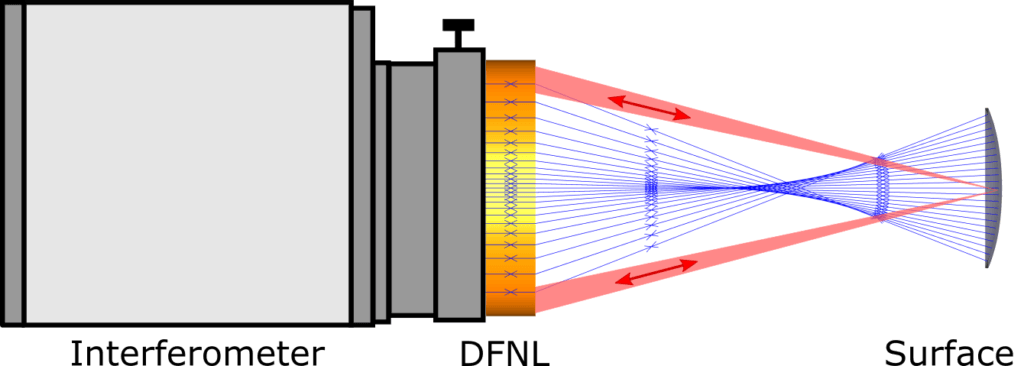
DFNL: Compatible with all Fizeau interferometers
DIOPTIC’s Diffractive Fizeau Null Lens CGHs (DFNL) are supplied with a standard bayonet mount and can be attached directly to the transmission sphere mount of the interferometer. This results in a much easier handling compared to conventional CGH Nulls. The elimination of the interferometer transmission sphere also allows testing of larger convex surfaces, since the entire entrance aperture of the interferometer can be used.
In contrast to conventional CGH Nulls, DIOPTIC DFNLs are manufactured on fused silica precision substrates with a flatness of lambda/10 (PV) or better. Since these substrates also provide the reference surface for the interferometer, a highly accurate reference wavefront is generated. The mechanical stability is guaranteed up to a diameter of 230 mm or 9 inch by appropriate substrate thicknesses of up to 24 mm.
Easy alignment, fast and precise measurements
The simple measurement setup when using DFNL CGHs allows fast and precise inspection of aspherical surfaces, cylinders and freeform surfaces. Since a DFNL CGH is attached directly to the Fizeau interferometer, no additional CGH adjustment mechanism is required. Auxiliary holograms to align CGHs with the interferometer objective are also not required. So-called alignment or fiducial holograms are individually designed to match the measuring surface. They enable the setup, especially of freeform surfaces, in the shortest possible time.
The CGH surface, which generates the aspherical wavefront, also functions as reference surface for the interferometer. With conventional CGH Nulls, transmission wavefront errors of the substrate are directly reflected in the measurement result. DFNL CGHs do not show this measurement error due to their principle. DIOPTIC guarantees a wavefront error of the reference surface of less than lambda/10 for all DFNL CGHs. On request, values < lambda/20 can also be achieved.
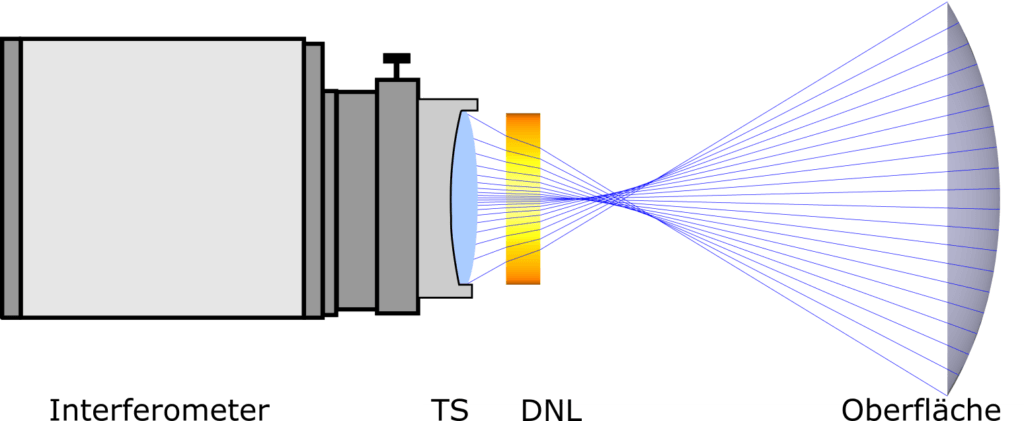
DNL: Diffractive Null Lens
Surfaces that cannot be inspected with a DFNL due to their strong curvature can usually be inspected with a combination of a computer-generated hologram and a transmission sphere. In this case not the plane wave of the interferometer is modulated, but a spherical wave generated by the interferometer objective, which already has a similar shape as the required aspherical wavefront. As with DFNLs, both concave and convex surfaces can be tested.
Measurement accuracy
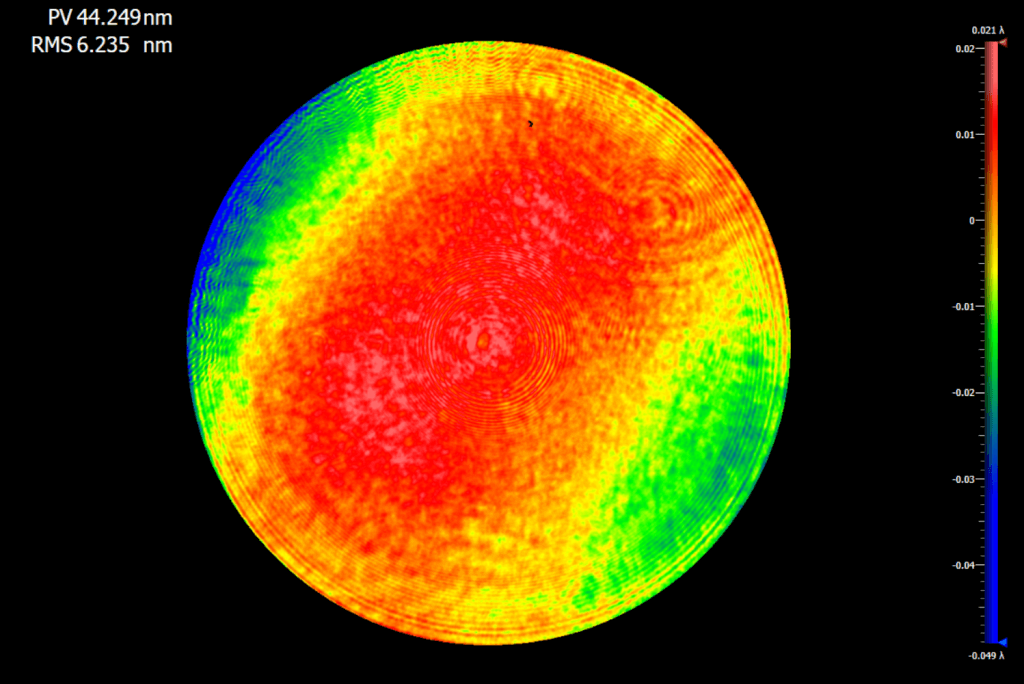
After calibration using this test, DTS CGHs can achieve measurement uncertainties of better lambda/50 PV.
Alignment aids for an optimal measuring result
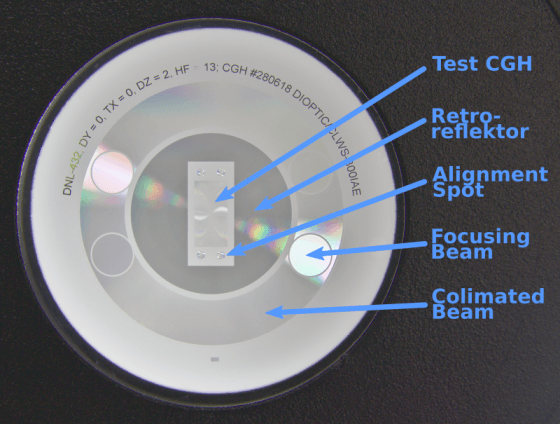
The decision which alignment structures are applied is made individually for each CGH and recommended by our experts.
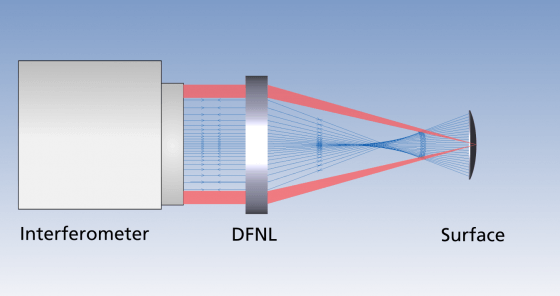
Cat-Eye-Ring
A cat-eye ring generates a spherical wavefront which is reflected back into itself when the center of the test object is exactly in the focus of the beam. The wavefront is generated with a diffractive ring, which is located on the substrate outside the actual test hologram. With the help of the interference pattern, the distance of the test object to the hologram can be adjusted with micrometer accuracy.
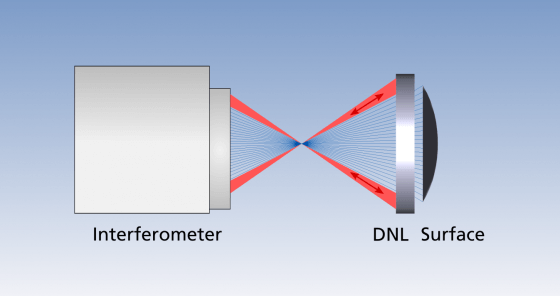
Retro reflector (only for DNL)
In order to enable the most exact possible alignment of a DNL to the transmission sphere of the interferometer, a retroreflector hologram is added. These diffractive structures outside the test hologram generate a spherical wave in reflection. With a perfect alignment between CGH and interferometer objective, the interferogram shows minimal aberrations. By minimizing the interference fringes, the CGH alignment can be performed.
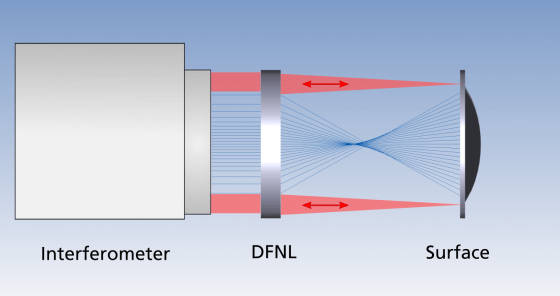
Focusing Beam
A very common option for adjustment are the so-called focusing beam holograms. These are diffractive lenses that generate a spherical wave with a defined focal point. On the test object outside of the test surface, corresponding markings, so-called fiducials, are applied which, if correctly oriented, correspond to the focus of the alignment spots. With at least 3 of these auxiliary holograms the position and tilt of the test object can be adjusted in all 6 axes.